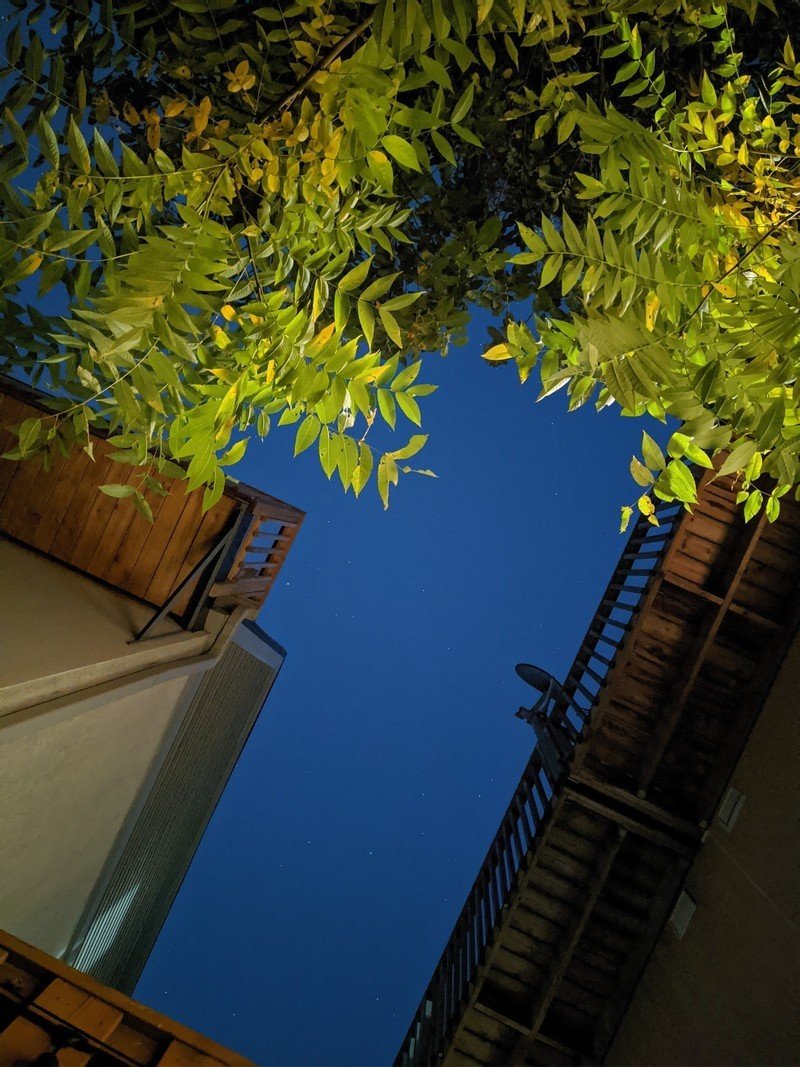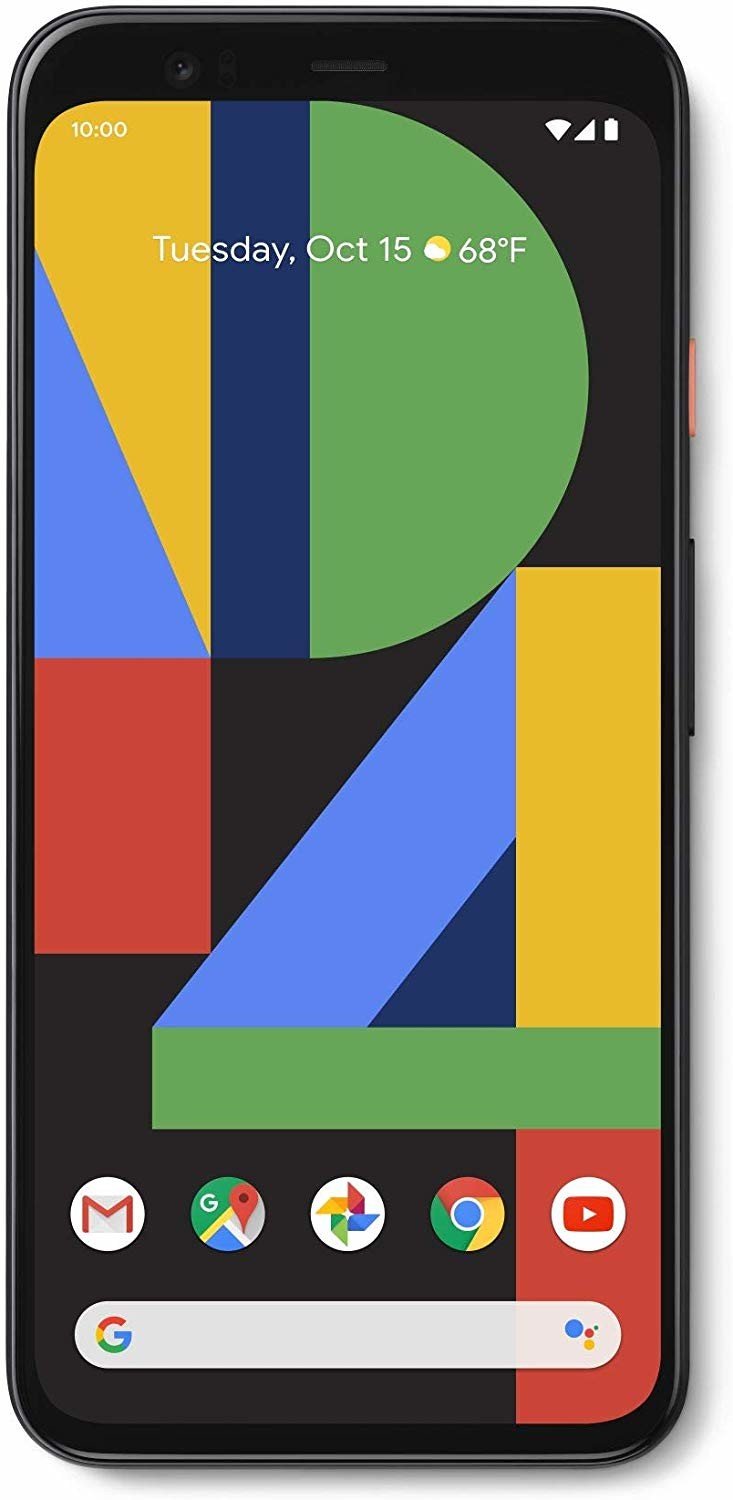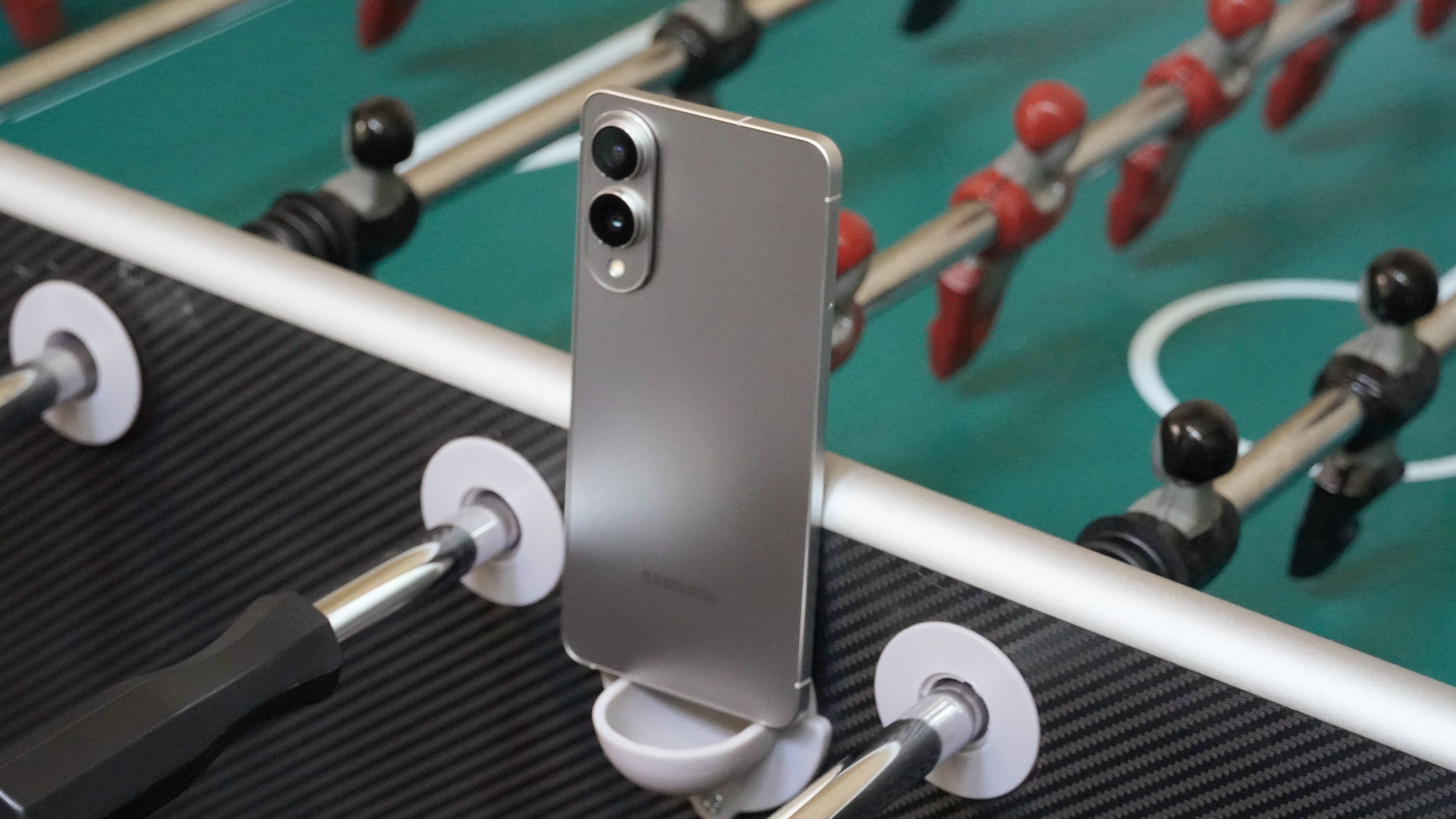Android Central Verdict
Bottom line: The Pixel 4 is another strong entry in the company's smartphone lineup, with an excellent camera, flawless performance, and an incredible display. But the experience is undermined by the phone's inexcusably bad battery life.
Pros
- +
Best-in-class camera
- +
Amazing display
- +
Flawless performance
- +
Best update record on Android
- +
Face unlock is seamless
Cons
- -
Terrible battery life
- -
Motion Sense is mostly a gimmick
- -
Specs don't add up for the price
Why you can trust Android Central
There are many nice things I can say about the smaller Pixel 4. It has an amazing camera — well, cameras — and the new super-fast face unlock, which replaces the super-fast rear fingerprint scanner, is incredibly reliable. I can even give Google some credit for having the audacity to put a tiny radar on the front of the phone, even if it is only used to wave away alarms and skip songs.
I can appreciate the improved bright-and-color-accurate OLED panel, along with the largely bug-free software experience. I can give props to the 90Hz display, which is a truly wonderful addition to any phone, along with the excellent and well-balanced stereo speakers.
I can point to Google's incredible on-device processing, which gives us access to an improved super-fast Google Assistant, and the fact that Google now bundles a voice recorder app that does real-time transcription without uploading anything to the cloud.
There's a considerable amount I can point to that the smaller Pixel 4 does right, and I plan to below. But so much of that success is undermined — negated, even — by the phone's terrible battery life.
In my week with the Pixel 4, I couldn't manage to get through even an average-use day without needing to top up in the late afternoon. The battery life is so bad that it re-introduced a concept I thought I'd long left behind: charger anxiety. If went out for an extended time, I had to plan around when, not whether, the phone would die.
In 2019, that's inexcusable. Worse, Google knowingly reduced the Pixel 4's battery capacity even though the Pixel 3 had battery issues of its own. In a year when almost every phone manufacturer improved battery life, included the notoriously battery-ambivalent Apple, which added four hours of daily uptime to the smaller iPhone 11 Pro, this oversight overshadows almost everything good about the small Pixel 4.
And it's why I can't in good conscience recommend it to anyone — at least not until Google does something to fix it.
Get the latest news from Android Central, your trusted companion in the world of Android
Pixel 4 What I like

| Category | Pixel 4 |
|---|---|
| Operating system | Android 10 |
| Display | 5.7-inch OLED, 2280x1080 (19:9) 90Hz |
| Processor | Qualcomm Snapdragon 855 Pixel Neural Core |
| RAM | 6GB |
| Storage | 64/128GB |
| Rear camera 1 | 12MP, 1.4µm, f/1.7, OIS, PDAF |
| Rear camera 2 | 16MP telephoto, 1,0µm, f/2.4 |
| Front camera | 8MP, f/2.0 90-degree lens |
| Audio | Stereo speakers USB-C |
| Battery | 2800mAh Non-removable |
| Charging | 18W USB-C PD Qi wireless |
| Water resistance | IP68 |
| Security | Face Unlock |
| Dimensions | 147.1 x 68.8 x 8.2 mm 162 g |
| Colors | Just Black, Very White, Oh So Orange |
| Price | $799 |
It's been a week of using the Pixel 4 and perhaps the best part of the experience has been an absence — an absence of bugs. This is the cleanest and most full-formed Pixel released to date. No disappearing photos, no dropped frames, no flushing music apps from memory mid-song. From a performance perspective, everyone just works.
You may be able to thank the additional 2GB of RAM onboard — 6GB total — and the extra months Google put into getting Android 10 right before it launched on the Pixel 3 series. You can likely also point to the Snapdragon 855, which is Qualcomm's best and most efficient chip in years.
The Pixel 4 is the right size: it's a little taller than the Pixel 3, and slightly thicker and heavier, but they give it a solidity that doesn't make me miss the two-toned finish of previous versions. The matte sides are delightful and were it not for the glossy back of the black model I received for review, I'd probably use it without a case. Can't say that about many of the all-glass phones I use these days.
Google's improved the display on the Pixel 4, too. While the Pixel 3 cleaned up its predecessor's mess, especially on the larger model, the OLED panel on the Pixel 4 is just sublime. Bright enough to use in daylight, color-accurate with a white balance that doesn't hew too blue for once, and incredible touch response, this is easily the best panel I've seen on a Google phone. But it's all about the 90Hz — or Smooth Display, as Google calls it.
Admittedly, the 90Hz display tech is a bit of a bait-and-switch, but when it's on it's fantastic. While Google doesn't explicitly say what apps or types of content trigger the smoother-motion display, it's definitely on the more conservative side compared to the OnePlus 7 Pro, 7T, and other high refresh-rate phones. There is an option to force the higher refresh rate at all times, but... you won't want to do that, at least not on this phone.

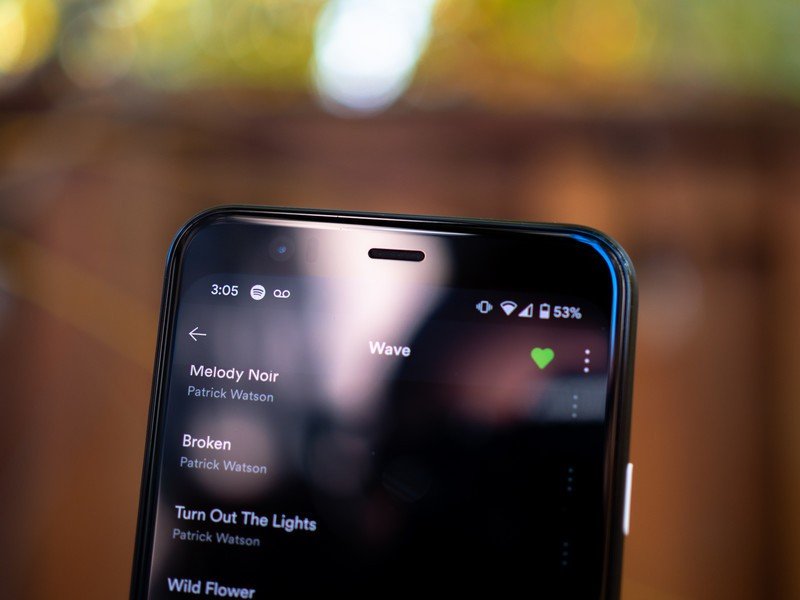
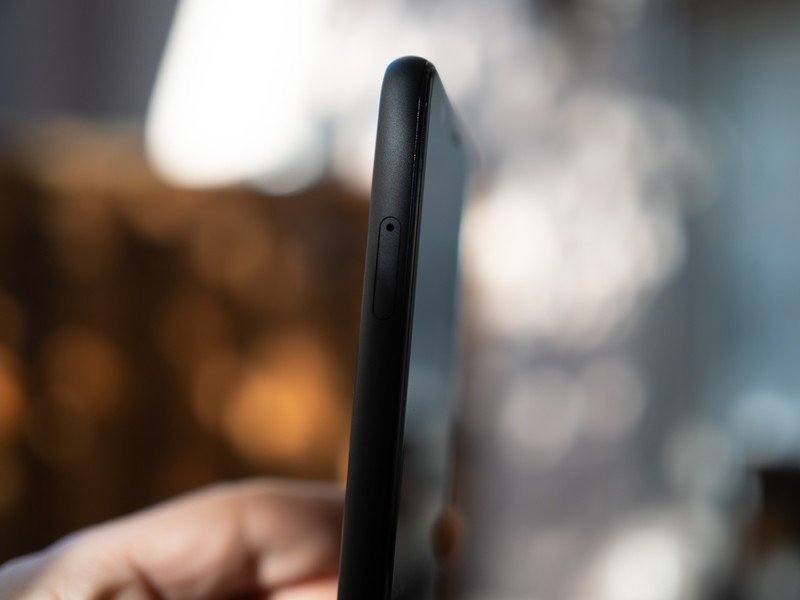
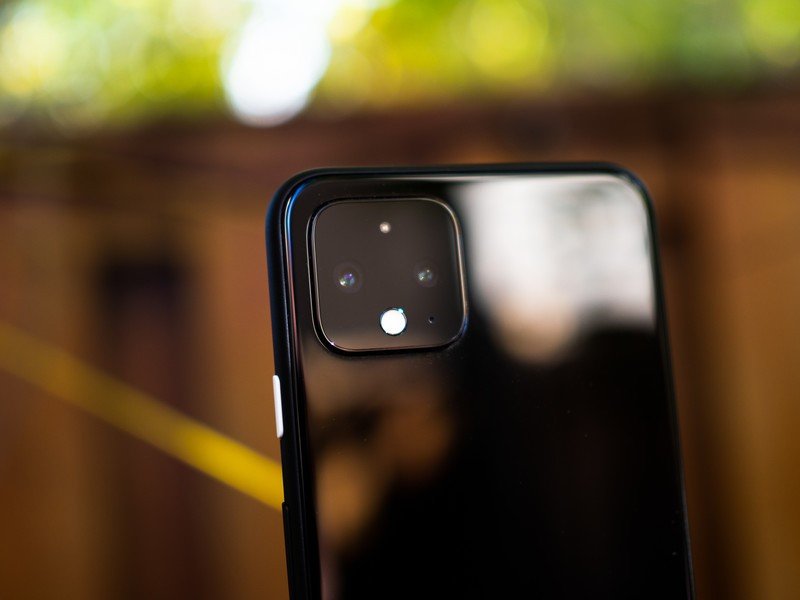
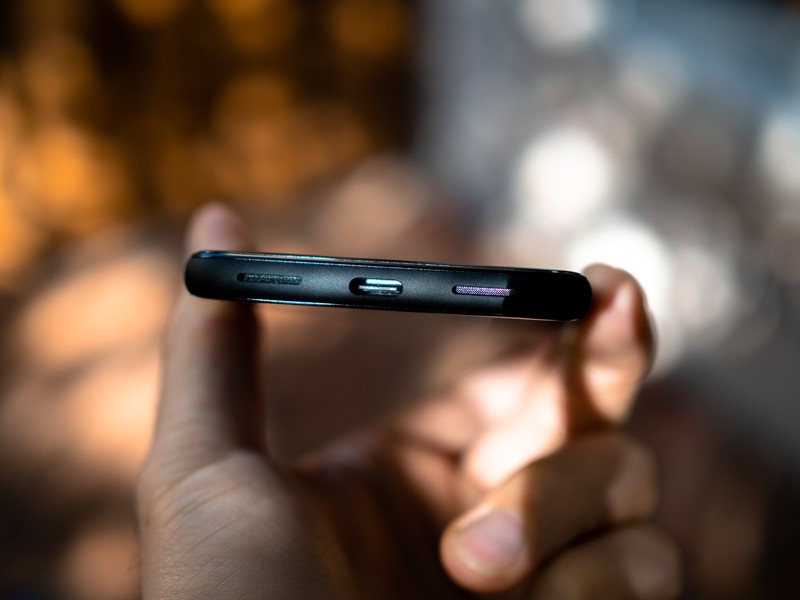
Google's also enabled Ambient EQ, a feature borrowed from the Nest Home series to detect the color temperature in the surroundings and adjust the screen accordingly. The effect is very subtle — this isn't the same as Night Light, which makes the screen much more yellow, but it is on the same spectrum. I noticed it most when using my phone indoors at night, when most of the lights were warm and sleepy. It's one of those Googly features you'll likely never notice but it adds just a little bit to the overall Pixel experience.
This is the Pixel with the fewest software bugs at launch, and coming from previous years that's a huge accomplishment.
I can't talk about face unlock without first acknowledging Google's success with Android 10. A lot of people, including me, doubted the company's ability to pull off yet another transition to gestures, but these ones will stand the test of time — especially when more apps move beyond the slide-in menus we're so familiar with. While Android 10 doesn't have a surfeit of in-your-face new features (except for dark mode and the aforementioned gestures), Google clearly cleaned up a lot of its codebase in the meantime.

By focusing on building an ultra-stable version of Android, it allowed, perhaps for the first time, the latest Pixel to have its own strong software foundation. It may sound silly to reward Google, the maker of Android, for releasing a set of phones with stable software, but we've been burned three years in a row (and many years before that with the Nexus line) so it's a pleasant surprise to be writing these words.
OK, now let's talk face unlock — Google's invested a lot of money, time and, well, reputation, in making its first foray into facial biometrics a memorable one, and by all accounts, it's a success. The actual unlocking procedure is seamless, and the angle of activation is clearly wider than on the iPhone. It's also faster than Face ID, which makes unlocking your phone feel sort of ambient rather than intentional — you just pick up the phone, the screen is already on, and next thing you know you're on the home screen. It's sincerely magical the first few times it happens.
The "ambiance" in that process comes from the Soli chip, a low-powered radar that Google's been developing for years as part of its Advanced Technology and Projects division. While Motion Sense, which I'll discuss below, is the showcase for Soli, increasing the speed of face unlock is an added bonus.
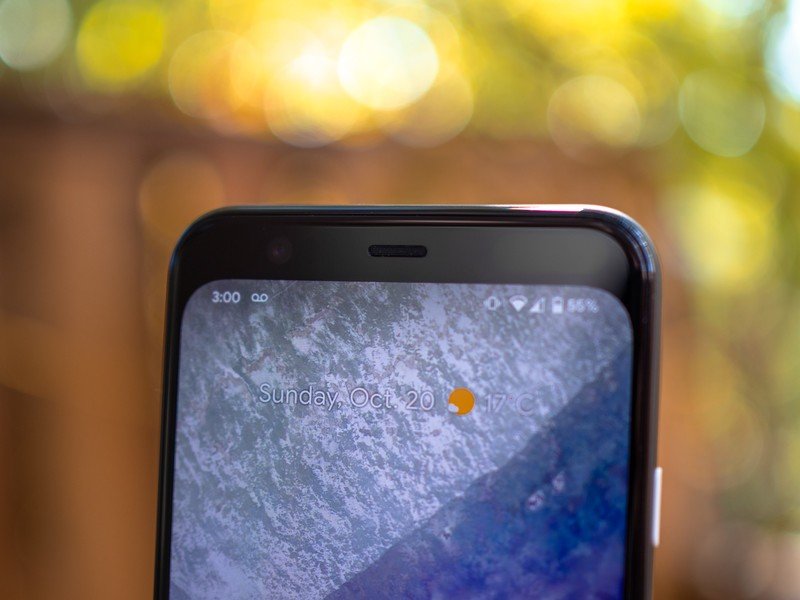
Of course, doing away with the rear-mounted fingerprint sensor is a bit of a mixed bag. On all Pixel phones before this one, you could swipe down on the sensor to bring down the notification shade — now you're forced to do so on an empty part of the home screen like an animal. It's not a huge deal, but the Pixel lineup was a rear-fingerprint holdout and part of me wanted Google to keep it around, if only for the gesture. But it wasn't to be.
Face unlock has its pros and cons. Technically, it's more seamless — as I said above, there's no explicit action needed; if you're standing in front of the phone, you're constantly authenticating. But Google's undermined face unlock's value somewhat by delaying an essential security feature that would force the owner to actually look at the screen while it's unlocking. It's one of those omissions that you just have to shake your head at.
If you're reading this review before my colleague Andrew Martonik's take on the larger Pixel 4 XL, know this: up until this point we largely agree on things. But here's where we diverge, and it comes down to a choice of password manager.
See, I use 1Password, which earlier this month updated its app to support Android 10's new catch-all biometrics API, meaning that it will check to see whether a phone has either fingerprint or face unlock and apply the proper rules accordingly. So now when I have to open my password manager, which is often dozens of times a day, I just look at my screen and it authenticates me. Like magic. It's difficult to put into words how much faster this process seems than pressing my finger on a bit of glass — even though it is only a half-second or so — but it's so seamless, and so perfect that I never want to go back.
Andrew, on the other hand, uses Enpass, which hasn't been updated yet. In fact, only five apps in the entire Play Store have received the necessary tweaks to support the Pixel 4's face unlock, which means the vast majority of apps you use — from banks to payment processors to airlines to note vaults — have no shortcuts. You'll be entering a username and password every time for the foreseeable future. And that sucks because instead of Google showing off how incredibly useful its new tech is, it's going to have to defend the fact that once again it couldn't corral enough developers to iterate on their apps. Android in a nutshell, folks.
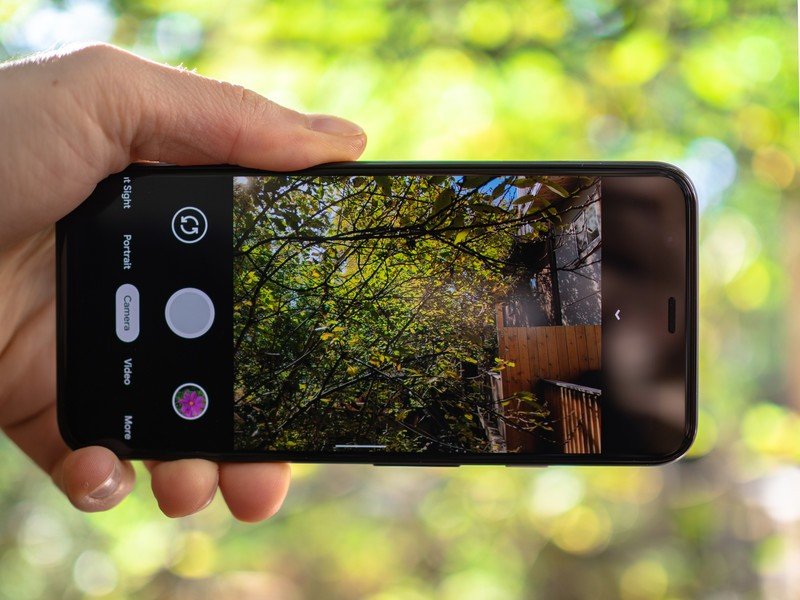
Finally, in the pro column, I have to talk about the camera. I've long loved taking photos with Google's Pixel phones, and that infatuation has only grown stronger here. Despite not improving the main camera hardware — the aperture is a slightly-wider f/1.7 but the sensor is identical to last year, which was practically the same as the one before it — Google's optimized the pipeline once photos are taken.
It's able to more intelligently discern what's in a scene and expose it accordingly. It's able to do more depth mapping, faster, so more photos are stitched together this time around to form the final shot. There are also now more manual controls, with a dual-exposure slider, which I used to dramatic effect on more than one occasion.
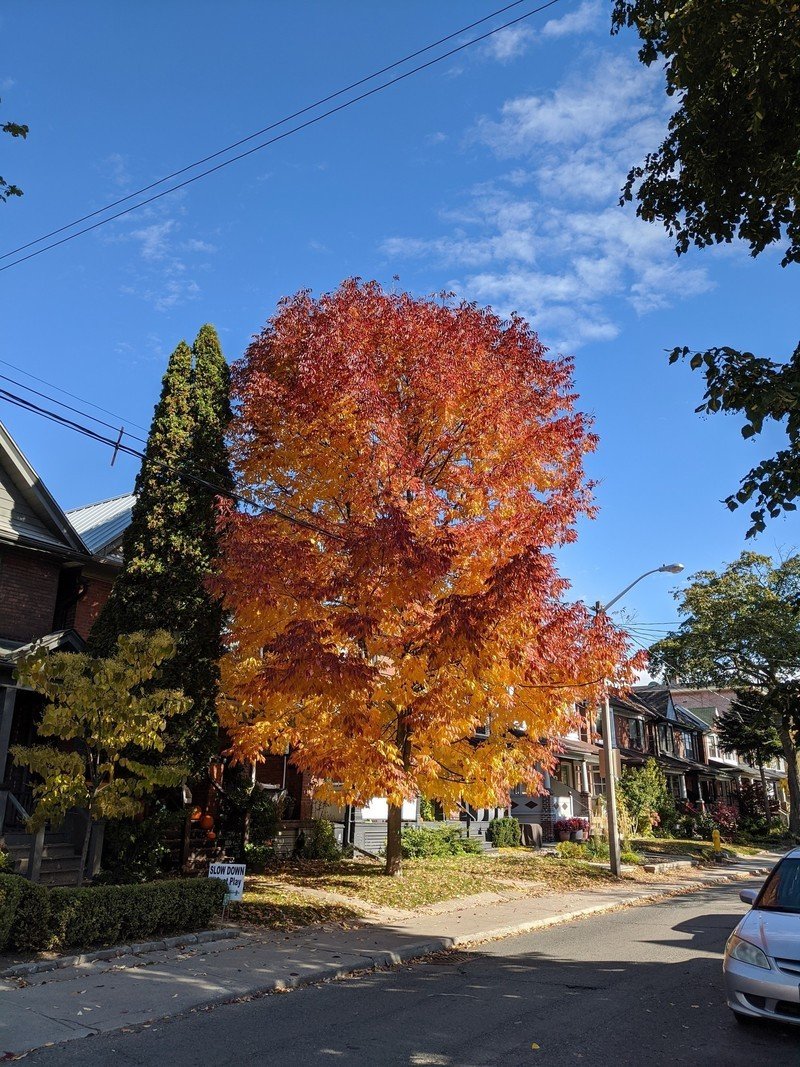
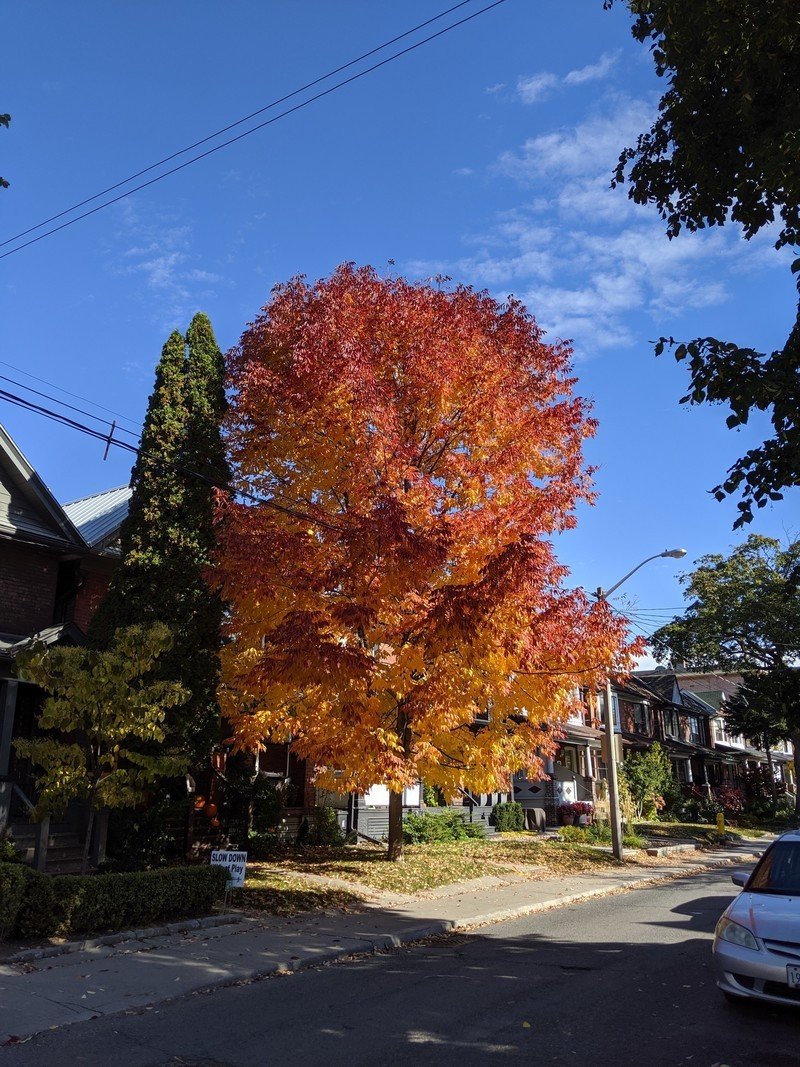

You can see the Pixel 4 has better dynamic range with its improved HDR+ algorithms, bringing more detail from the shadows without sacrificing the colors of the trees of the vividness of the sky. The iPhone's colors are much more muted here, and the photo doesn't pop nearly as much, though it has better dynamic range than the Pixel 4.



The Pixel 4 takes the most balanced shot here, with perfect colors and plenty of detail. It's also very similar to the Pixel 3.



All three phones take very similar shots here, with the Pixel 4 capturing a warmer, more balanced shot, with the most accurate colors of the three.
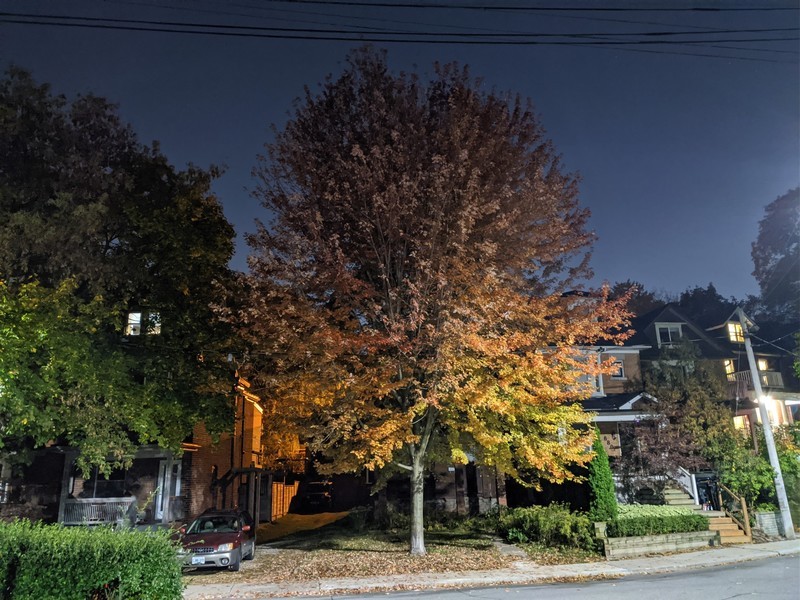
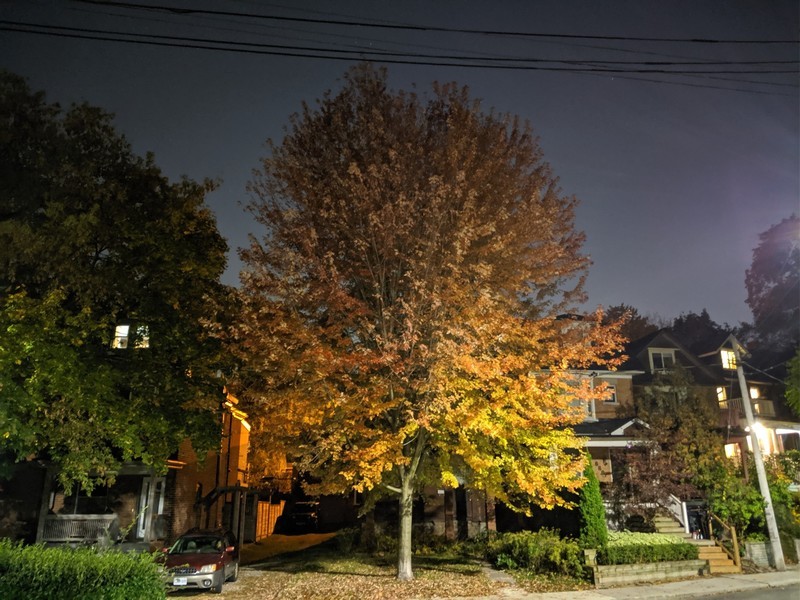
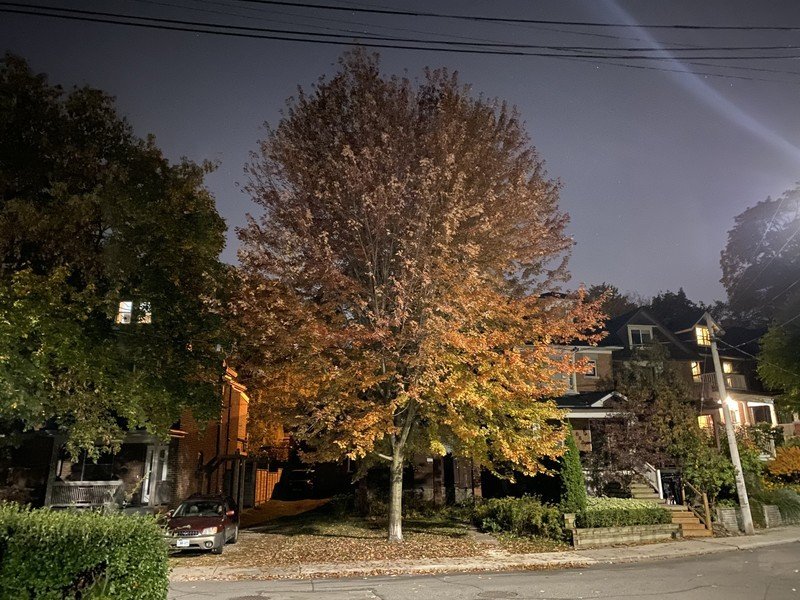
This is one of my favorite examples, since it is shows how much improved the Pixel 4's Night Sight feature is over the Pixel 3's. I was skeptical of the year-over-year improvement, but it's pretty clear when comparing it to the Pixel 3: much more detail, more balance colors, less muddiness in the shadows and highlights. An all-around better photo. Compared to the iPhone 11 Pro, it's cooler and more color-accurate.
There's a second camera, too, both for taking 2x telephoto photos but also to augment the primary sensor, providing more data for all types of shots. Google doesn't see the addition of a second camera as merely giving users the ability to photograph subjects that are twice as far away; that extra data is fused with the primary sensor to make photos shot at 4x, or 8x, look way better than that otherwise would. The results are pretty staggering.
The main difference I noticed between the Pixel 4's output compared to the Pixel 3 was the additional detail; shots are cooler, perhaps, but it's possible to see fine lines in buildings, or people, that weren't picked up before. This is especially apparent when using Night Sight, which has been further improved this year with the addition of an astrophotography mode.
Shooting stars is hard; shooting stars on a phone is basically impossible. Google accomplishes this (with the help of a tripod) by figuring out how to extend the lens's shutter speed without completely overexposing the finished product. It's the true test of everything Google's good at from a computational photography perspective, and while I couldn't get completely away from the city, I managed to capture a couple of decent examples.
While many people claimed that Apple regained the photography crown this year with the iPhone 11 Pro, I'm not ready to acquiesce. While the Pixel 4 lacks the 11 Pro's ultrawide lens option, I prefer its photos over the iPhone's almost every time.
Pixel 4 What I hate
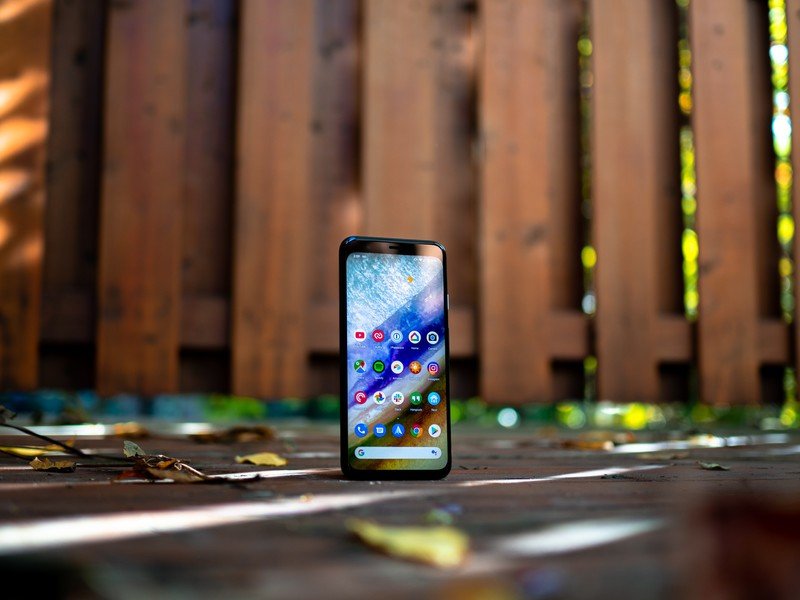
Before I excoriate this phone's battery life, I have to rail against Motion Sense as it's currently implemented. The technology is astoundingly cool, but using it to skip songs and mute alarms is underwhelming at best.
And it would stay merely underwhelming if it worked every time, but it doesn't. Whether it's my technique or the feature's poor calibration, for every five songs I successfully skipped by waving my hand dutifully in front of the phone, at least five would do nothing. I'd see what Google calls the "glowing display" — a light indicator at the top of the screen telling you an app in use currently supports Motion Sense — but either from a swipe too fast or too slow I couldn't get it to work properly.
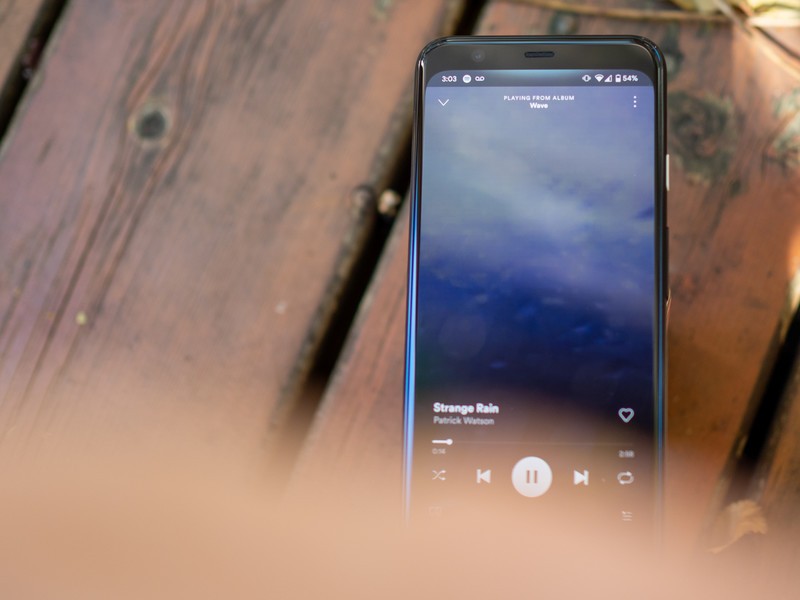
Hopefully, Google can and will improve Motion Sense in forthcoming updates, but for a feature that's meant to get pique the interest of prospective buyers, this ain't it, chief.
I'm getting there, I promise, but I still have a few other nits to pick. The new Assistant is great and all, but I could only use it for a few minutes before I added my work email, which is based on a G Suite backend, only to discover that triggers a reversion to the existing Assistant. Ridiculous.
None of the Pixel 4's flaws are particularly damning — except its battery life is inexcusably bad.
A couple more quibbles? No Wi-Fi 6 (not a huge deal, but a lack of future-proofing foresight) and only 18W wired charging. It's quick enough but Samsung managed to get to 45W engaging the open PPS standard with the Note 10+, so I think Google could and probably should step up its game.
OK, now to the main event, the reason I have such a difficult time recommending this phone to anyone: the battery. While the cell is only 4% smaller than the one on the Pixel 3, it's still smaller — despite the Pixel 4 being 0.3mm thicker. Google says that additional thickness comes from all the other tech inside the phone, including the first-of-its-kind Soli radar chip, which is fine I suppose, but for this fact: this is the worst battery life I've had on a phone in years.
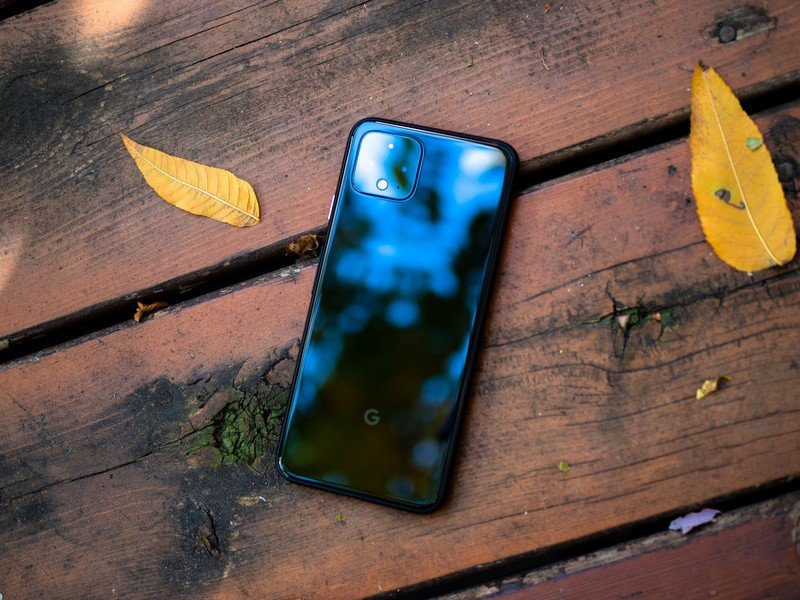
Most days, the Pixel 4 is dead by supper — yes, I eat supper around 8 p.m., what of it? — and on a particularly busy Saturday, it was dead by 6 p.m. That's inexcusably, laughably bad battery life. And it's a self-fulfilling prophecy given the poor results of the Pixel 3.
And I'm not some power user, either: except for the first day, which I spent setting up the Pixel 4 and getting it how I like it, I didn't have more than three hours of screen-on time. I ended up disabling Smooth Display, Always-on Display and Motion Sense — basically all the fun stuff — just to eke out a couple of extra hours and the phone still hit zero by early evening.
That Google doesn't prioritize battery life at a time when people are using their phones more than ever tells me that Google doesn't understand its potential audience. People don't want to worry about topping their phones up during the day, nor do they want to relive the anxieties of the early smartphone days when they never knew how far into the afternoon their devices would stay on.
Google Pixel 4 Should you buy it?

Let me be clear: I really like the Pixel 4. From morning until mid-afternoon, it's one of my favorite phones of the year. And then, around 3 p.m., when the battery indicator drops below 40%, I revisit the frustration of what owning a smartphone was like half a decade ago.
The difference is that, unlike then, I don't have to live like that anymore. Most phones, even smaller ones — even ones made by Google! — manage to last the whole day and well into the following one. I spent the whole summer with a Huawei P30 Pro and occasionally didn't charge it at night because I knew it would last.
At $799, the Pixel 4 is the same price as last year's model, but it's also up against a bunch of really great phones that cost considerably less. I just reviewed the excellent OnePlus 7T, whose four cameras are admittedly not nearly as good as the three on the Pixel, but just about everything else — including its $599 price — is superior.
As for the obvious comparison to the $699 iPhone 11, well... the Pixel 4 may be on every major U.S. carrier this year, but people looking for a default phone choice are likely going to be more easily directed to a new iPhone that looks great, has an amazing camera, and costs $100 less.
3.5 out of 5
For all of the Pixel 4's greatness, it's the first smaller version of the phone I can't recommend. The Pixel 2 saved us from the 2 XL's terrible screen; the Pixel 3 ducked the bathtub notch. But unless you're absolutely allergic to big phones, the only Pixel 4 you should consider this year is the Pixel 4 XL.
Good thing we have a whole review dedicated to it.

Daniel Bader was a former Android Central Editor-in-Chief and Executive Editor for iMore and Windows Central.



